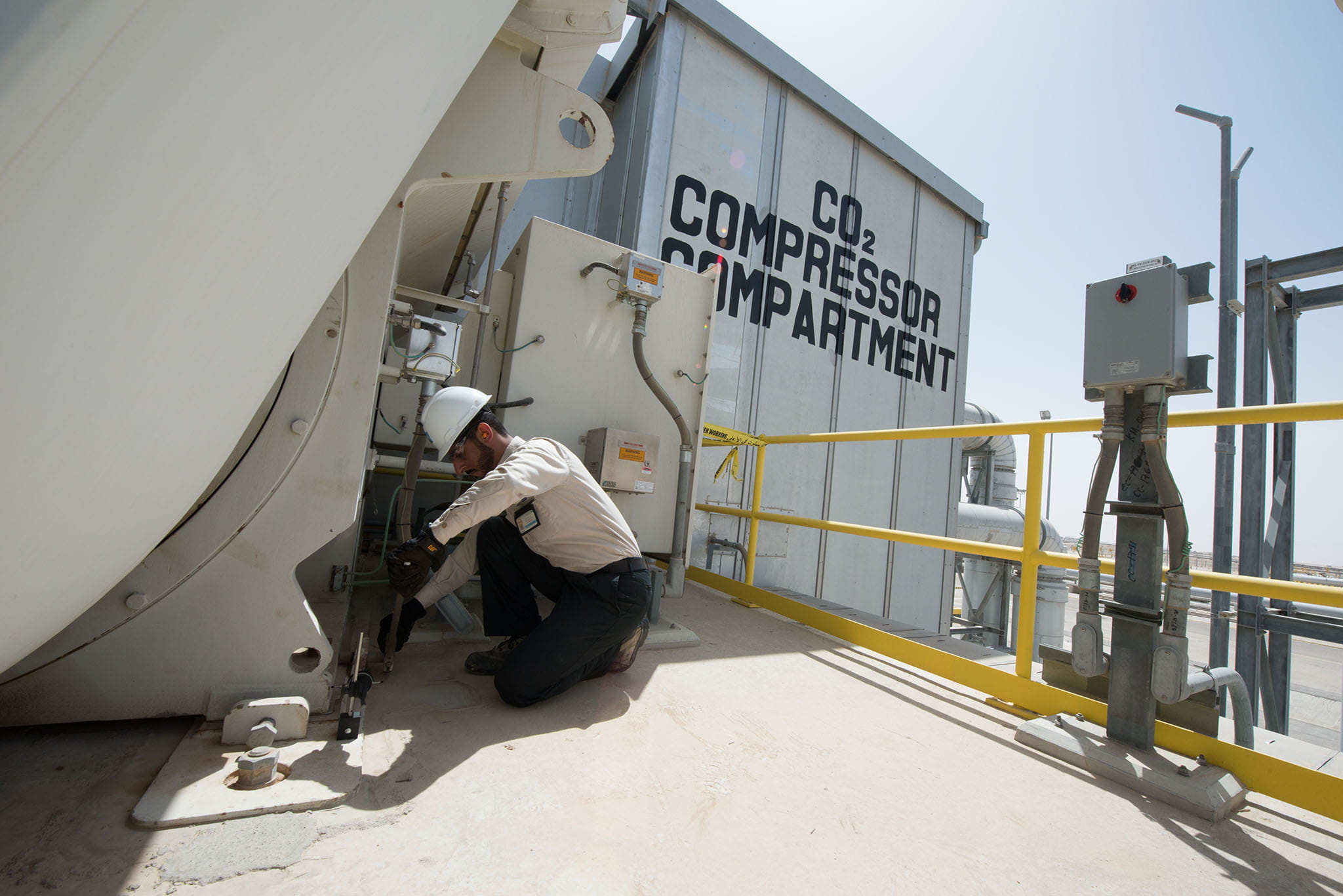
Circular Carbon Economy
Carbon dioxide (CO2) performs a delicate life-sustaining function on Earth, but decades of industrialization has resulted in excessive amounts of this greenhouse gas in our atmosphere. The circular carbon economy is an important concept to adopt in global efforts toward managing the world’s excess CO2 emissions.
What is the circular carbon economy?
Most economies discard a significant amount of materials as waste after their initial use.
The circular economic system is built around the re-use of these resources, again and again. And this is a model that can easily be adapted to incorporate the world’s excess carbon.
A circular carbon economy is a framework for managing and reducing carbon emissions. It is a closed-loop system involving 4Rs: reduce, reuse, recycle, and remove.
Aramco has adopted the circular carbon economy framework as a way to reduce our carbon emissions.
The 4 Rs
Reduce
Energy efficiency and flaring reduction are important actions toward mitigating carbon emissions, as is continued development of lower-carbon energy sources like renewables, hydropower, nuclear, and bioenergy.
Reuse
CO₂ has value, and using innovative technologies to capture it means it can be reused as useful products, such as fuels, bioenergy, chemicals, building materials, and food and beverages.
Recycle
CO₂ is chemically transformed into new products such as fertilizer or cement, or other forms of energy such as synthetic fuels.
Remove
Using technology to capture and store CO₂ is an important way to potentially achieve large-scale reduction of emissions, while increasing photosynthesis by planting flora could also contribute toward the reduction of carbon emissions.
A circular carbon economy, moves from a linear economic to a circular economic model through reduction, reuse, recycling, and removal.
What are we doing?
We believe the circular carbon economy is an important framework for reducing global emissions while ensuring consistent economic growth.
We have undertaken a number of circular carbon economy initiatives.
We aim to reduce CO2 emissions, enhance fuel efficiency, and create next-generation materials that make consumer products more-sustainable.
We continue to innovate and to explore more-effective carbon management solutions that can support the reduction of carbon emissions from our activities.
Reduce: gas flaring reduction
Flaring is a critical part of ensuring safety in the oil and gas industry, but it is also a source of CO2 emissions.
Back in the 1970s, we started our Master Gas System, and introduced our Zero Routine Flaring Program, significantly reducing the amount of gas we flare.
And we are not slowing down our efforts.
Reuse: using and sequestering CO2
Injecting CO2 into a reservoir assists in improving and enhancing oil recovery, and sequesters CO2 at the same time — a win-win for all.
Aramco operates a large enhanced oil recovery project in Saudi Arabia. After we capture CO2 at one of our NGL plants, we then pipe it 85 km and inject the gas into a mature area — where production has started to decline — of one of our oil fields.
This helps in unlocking the trapped oil after waterflooding, in a process known as enhanced oil recovery (EOR), and a portion of the CO2 remains sequestered in the reservoir.
Recycle: transformation into new materials
Carbon, once captured, can be utilized as a useful (and valuable) material in its own right.
CO2 already has a number of industrial uses — including in agriculture — and more are being developed every day.
Applications we are pursuing include more-durable and faster-drying cement, carbon fiber, and synthetic fuels production.
Remove: capturing CO2
To date, we have planted over 48 million mangrove trees along the Arabian Gulf and Red Sea coastlines, as well as over four million terrestrial native trees. And we aim to plant millions more.
As well as restoring habitats that encourage biodiversity and act as a natural barrier to coastal erosion, mangroves also form a natural sink for CO2.
Aramco’s Mobile Carbon Capture technology has the potential to mitigate up to 40% of CO2 emissions from a vehicle by preventing them from being released from the exhaust, and the system demonstrates promise in aiding emissions reduction in the shipping industry.
Related articles
Digitalization
Carbon Capture & Storage
We are committed to ensuring a sustainable energy future. We believe carbon capture and storage is a central part of efforts to reduce emissions, whilst ensuring the world can continue to thrive.
Carbon management
Energy is an essential enabler of human progress. Advancing human progress and economic development while tackling the global climate challenge is the great challenge of our time.

